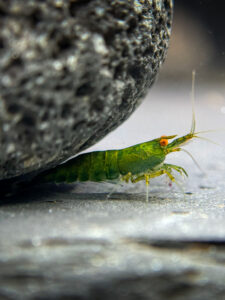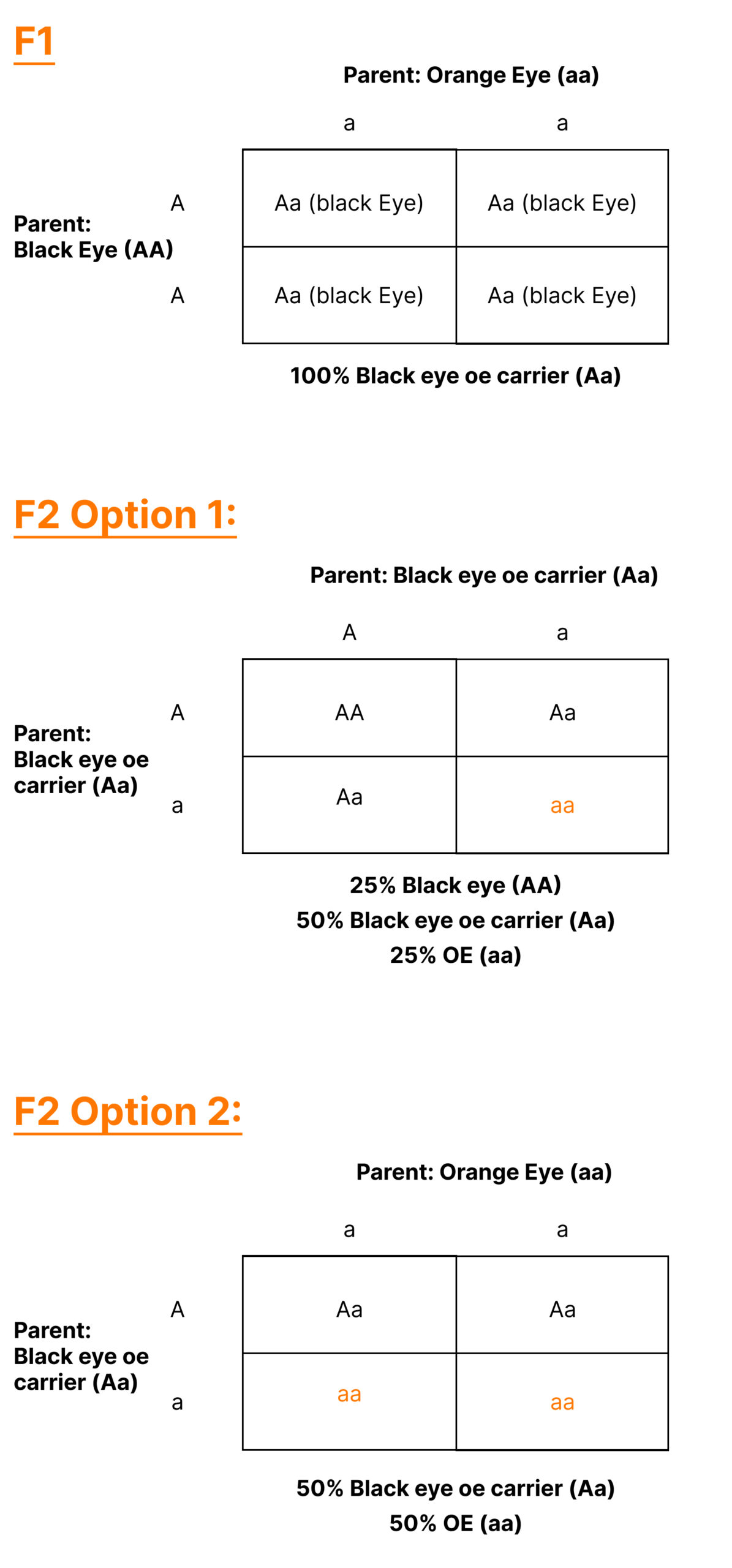The mastery of the orange eye (OE) trait dwarf shrimp by German breeders has ignited a revolution in the shrimp-keeping world. This striking characteristic, with its bold, fiery eyes contrasting beautifully against various body colors, has quickly become the most sought-after feature in the hobby. As enthusiasm spreads, orange eyes have become the ultimate mark of distinction in aquariums worldwide.

Neocaridina Joins the OE Club
While Caridina shrimp have long been the focus of advanced breeding projects, Neocaridina are now catching up with their own orange-eyed varieties. This is particularly exciting as Neocaridina are generally easier to care for and can often thrive in regular tap water, making the OE trait more accessible to a wider range of hobbyists.
Stunning Appearances
The orange eyes of these shrimp create a sharp contrast against their colored bodies. A dark spot in the center of the eye, likely due to residual pigments, adds further intrigue. It’s important to note that Neocaridina OE shrimp are distinct from OE tiger shrimp (Caridina), though other Caridina species like the white Caridina babaulti “albino” also possess similar orange eyes with black spots. Notably, Taiwan’s famous breeder Skyfish uses the term “golden/orange eye” for the Caridina dennerli, despite the presence of a central black spot.
Inheritance & Genetics
The orange eye trait is inherited recessively, following Mendel’s laws of genetics. For example, when you cross a black rose OE with a blue sapphire, the resulting offspring will have black eyes.
- Recessive Traits: In both Neocaridina and Caridina shrimp, certain traits, like orange eyes, are recessively inherited. This means that for the trait to be visible in the offspring (F2 generation), both parents must carry the gene for that trait, even if it is not visibly expressed in the parents themselves.
- Carrier Status: Similar to Neocaridina, when a Caridina with a recessive trait (like orange eyes) is bred with another shrimp without the visible trait, the offspring may be “carriers” in the F1 generation. These shrimp won’t express the trait (e.g., they will have black eyes), but they carry the gene. When these F1 shrimp are bred with each other or with a parent shrimp carrying the recessive gene, the trait can reappear in the F2 generation.
- Independent Body Color Inheritance: In both shrimp genera, body color is typically inherited separately from other traits like eye color. This allows breeders to create new lines by crossing shrimp with different body colors while still selecting for specific traits like orange eyes.

European Breeding Excellence
Unlike mass-produced shrimp, the European OE trait is the result of years of careful, small-scale breeding by boutique breeders, particularly in Germany. These dedicated enthusiasts have meticulously refined the OE gene over time, producing limited quantities to ensure the highest quality and genetic stability.
Rarity and Exclusivity
The OE trait remains relatively rare, especially in high-quality lines. This exclusivity makes OE shrimp highly prized among collectors and breeders. Owning OE shrimp is like having a living piece of art in your aquarium. For hobbyists who enjoy genetics, breeding OE shrimp offers an exciting challenge. Successfully maintaining and improving an OE line requires skill and patience, making it a rewarding endeavor for dedicated breeders. The potential for creating new color combinations and patterns is virtually limitless.
High-quality OE shrimp from reputable German breeders can be seen as an investment. As the trait becomes more established and refined, early adopters may find their colonies increasing in value.
Temperament and Hardiness
German breeders are known for selecting not just for appearance, but also for hardiness and good breeding behavior. This means OE shrimp from quality European lines may be more adaptable and successful in a variety of tank setups.
As breeders continue to work with the OE trait, there’s potential for new and exciting variations. The shrimp hobby is constantly evolving, and the OE trait provides a foundation for future innovations.










